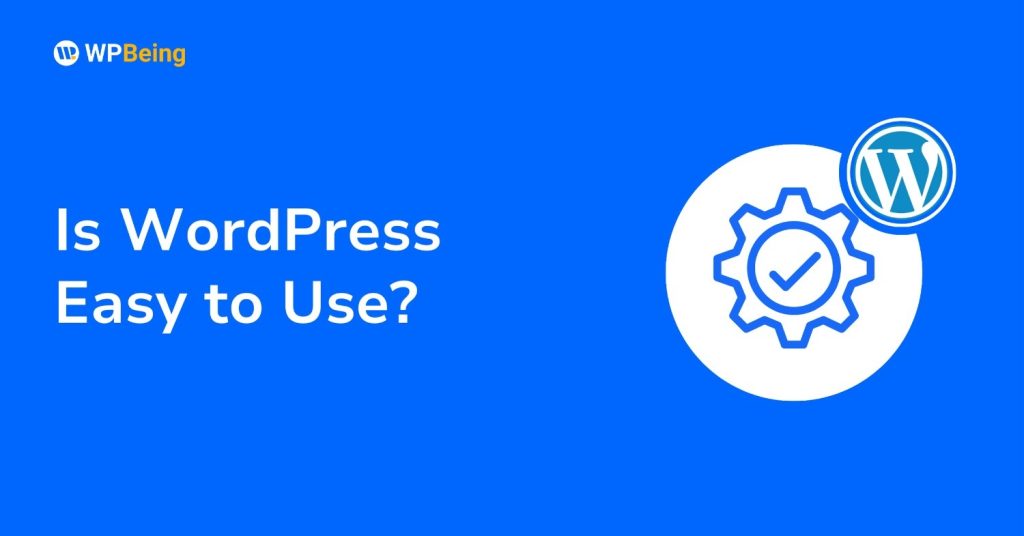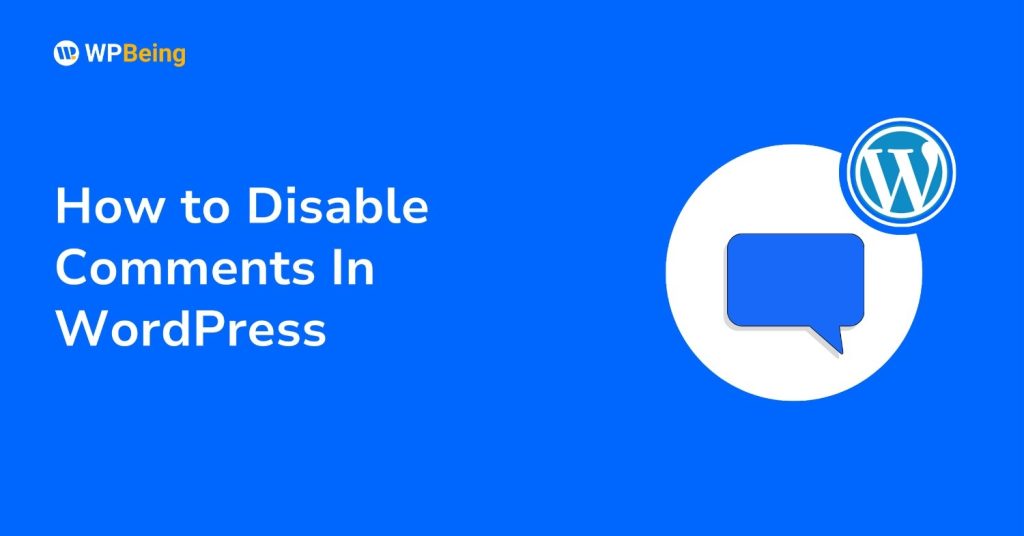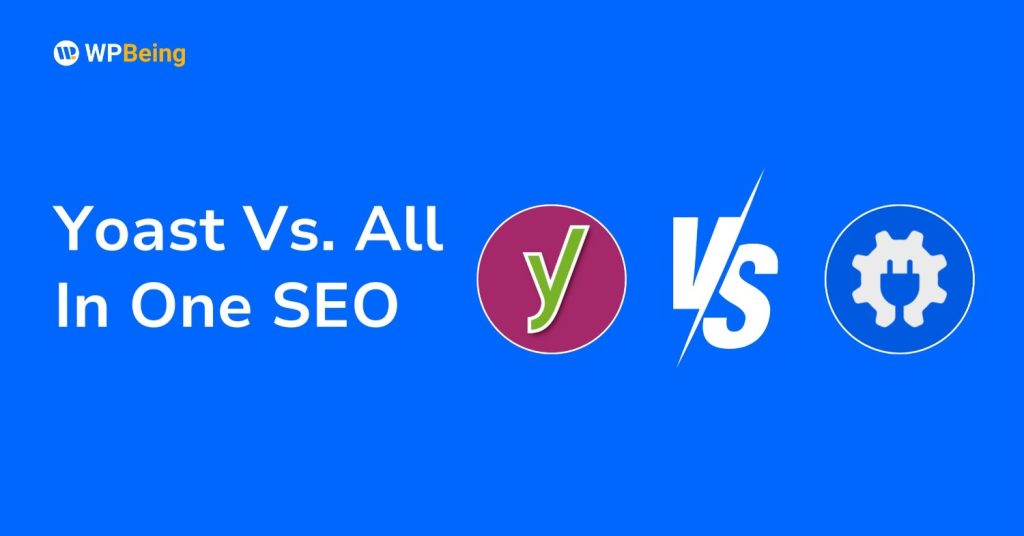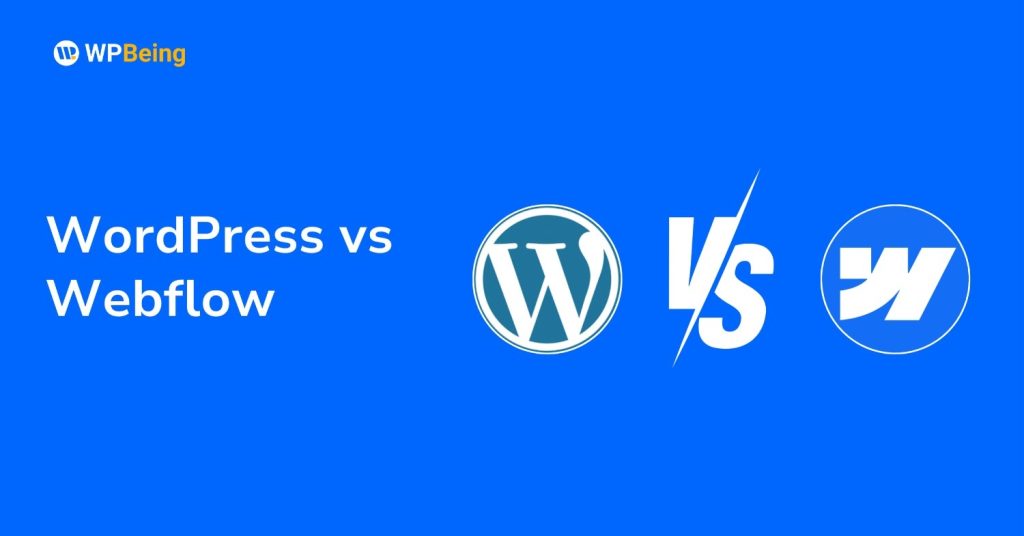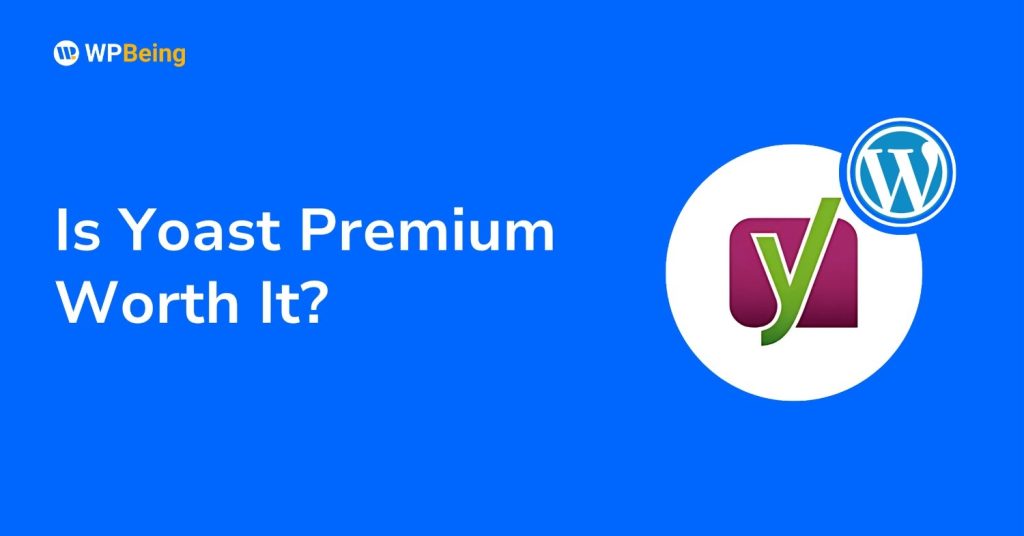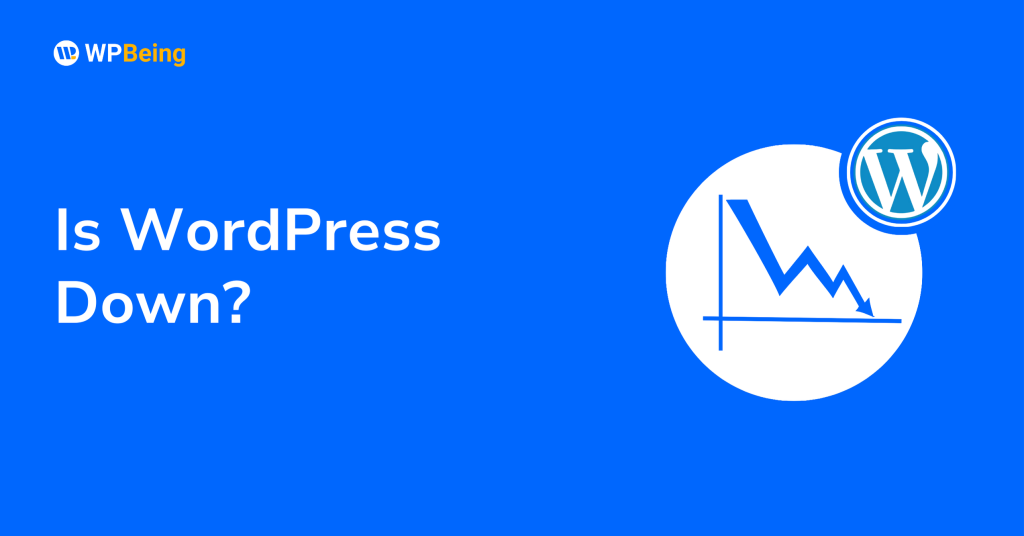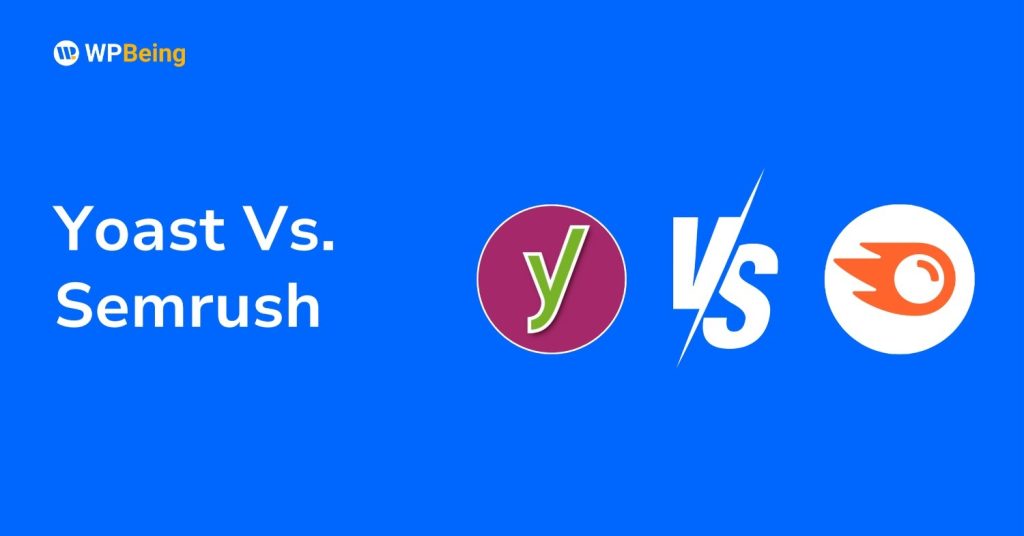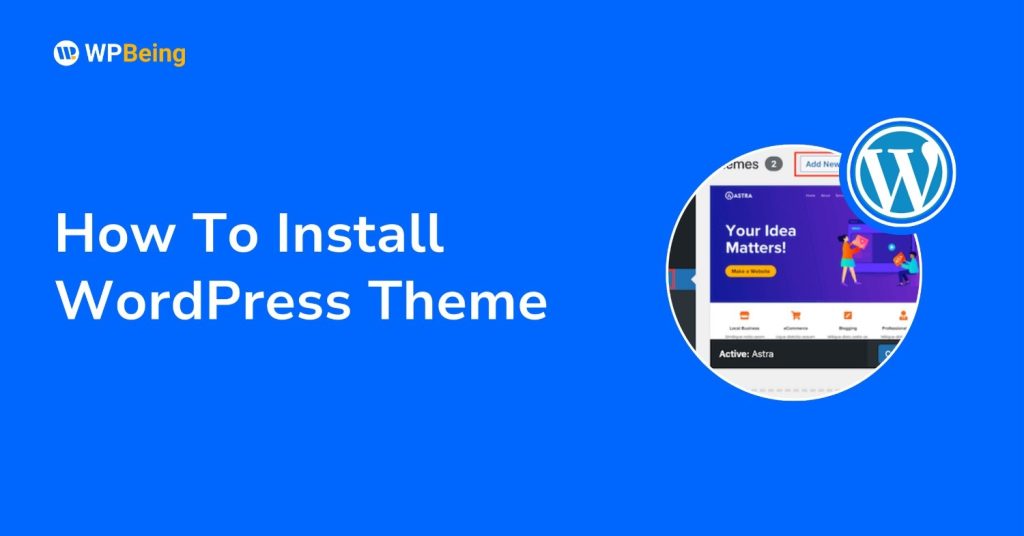If you’re thinking about building a website or launching an online store, chances are you’ve come across both WordPress and WooCommerce. While they’re often mentioned together, they serve different purposes—and that can make things a little confusing for beginners.
WordPress is a powerful platform for creating and managing websites of all kinds, while WooCommerce is a plugin that transforms a WordPress site into a fully functional online store. In simple terms, WordPress provides the foundation, and WooCommerce adds the eCommerce tools you need to sell products or services.
This guide breaks down how WordPress and WooCommerce work individually, how they complement each other, and which one (or both) might be the best fit for your online project.
WordPress vs WooCommerce: A Quick Overview
Before diving into the details, let’s clarify the fundamental relationship between WordPress and WooCommerce. Think of WordPress as your smartphone’s operating system and WooCommerce as an app you install on it. WordPress is the foundation, while WooCommerce is a specialized tool that adds specific features to that foundation.
Here’s a simple breakdown of what each platform offers:
| Feature | WordPress | WooCommerce |
|---|---|---|
| Type | Content Management System (CMS) | WordPress Plugin |
| Purpose | Website creation and content management | eCommerce functionality |
| Best For | Blogs, portfolios, business websites | Online stores and selling products |
| Cost | Free (hosting and premium themes/plugins cost extra) | Free (extensions and themes cost extra) |
| Customization | Highly customizable with themes and plugins | Customizable store features and design |
| Setup Complexity | Relatively easy for beginners | Moderate learning curve |
| Hosting Requirements | Standard WordPress hosting | Optimized WooCommerce hosting recommended |
Now that you have a general understanding, let’s explore each platform in more detail.
What Is WordPress?
WordPress is a powerful, open-source content management system that powers approximately 43.4% of all websites on the internet. Originally launched in 2003 as a blogging platform, WordPress has evolved into a versatile website-building tool that allows users to create almost any type of website imaginable.

At its core, WordPress provides an intuitive dashboard where you can create and manage content, customize your site’s appearance, and add functionality through plugins. The platform is designed to be user-friendly, allowing even those with limited technical knowledge to build professional-looking websites.
Key features of WordPress include:
- User-friendly content editor (Gutenberg)
- Thousands of free and premium themes
- Extensive plugin library to extend functionality
- Built-in blog management
- SEO-friendly structure
- Multi-user capabilities
- Regular updates and security patches
WordPress’s flexibility makes it suitable for various projects, from personal blogs and portfolios to corporate websites and membership platforms. Its open-source nature means it’s constantly being improved by a worldwide community of developers.
What is WooCommerce?
WooCommerce is a free, open-source eCommerce plugin built specifically for WordPress. Launched in 2011, it has grown to power around 23% of the top one million e-commerce websites, making it one of the most popular eCommerce solutions available.

When installed on a WordPress website, WooCommerce transforms it into a fully functional online store. It seamlessly integrates with your existing WordPress dashboard, adding new sections specifically for managing products, orders, customers, and other eCommerce functions.
Key features of WooCommerce include:
- Product management (physical, digital, and variable products)
- Inventory tracking
- Shopping cart functionality
- Secure checkout process
- Multiple payment gateway options
- Shipping calculation and tax management
- Order management system
- Customer account creation
- Product reviews and ratings
- Sales reports and analytics
WooCommerce’s power lies in its extensibility. While the core plugin provides essential eCommerce features, you can enhance your store’s functionality with additional extensions for subscriptions, memberships, bookings, advanced shipping options, and much more.
WordPress vs WooCommerce: Major Differences
Now that we understand what each platform does, let’s explore the key differences between WordPress and WooCommerce in detail.
1. Main Purpose
The fundamental difference between WordPress and WooCommerce lies in their primary purpose and what they’re designed to accomplish.
WordPress is a comprehensive content management system built to create and manage websites of various types. Its core strength is content creation and management, allowing users to publish blog posts, create pages, upload media, and organize content in a structured way. The platform provides all the basic tools needed to build a functional website, from user management to navigation menus.
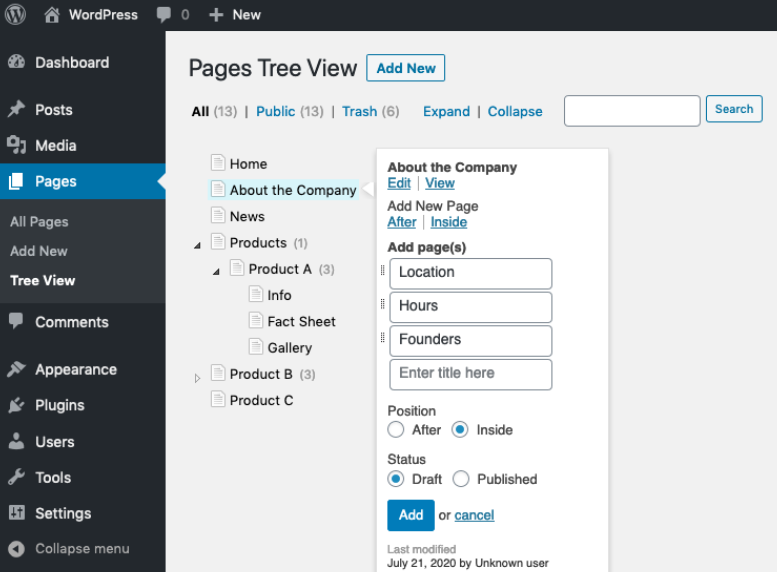
While WordPress can handle basic selling functionality, it’s not equipped with built-in eCommerce capabilities. This is where WooCommerce comes in.
WooCommerce, on the other hand, is specifically designed to add eCommerce functionality to WordPress websites. Its sole purpose is to transform a standard WordPress site into an online store with all the necessary tools for selling products or services.
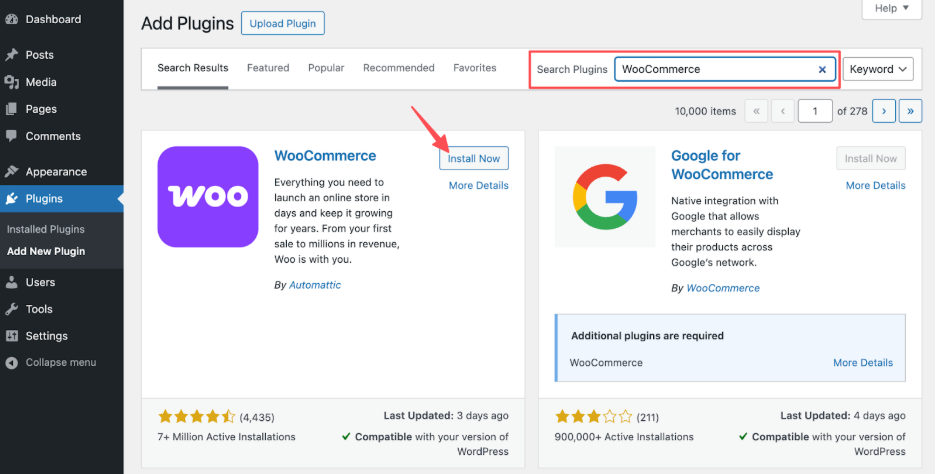
WooCommerce adds product catalogs, shopping carts, payment processing, and inventory management – essential features that WordPress alone doesn’t provide.
In essence, WordPress is the foundation upon which you build your online presence, while WooCommerce is the specialized tool that enables selling on that foundation. They’re not competing platforms but complementary tools that work together to create a complete eCommerce solution.
2. Ease Of Use
When comparing the user experience of WordPress and WooCommerce, it’s important to consider the learning curve associated with each platform.
WordPress has earned its reputation for being user-friendly, especially for beginners. Its dashboard is intuitively designed, making it easy to navigate even for those with limited technical experience.
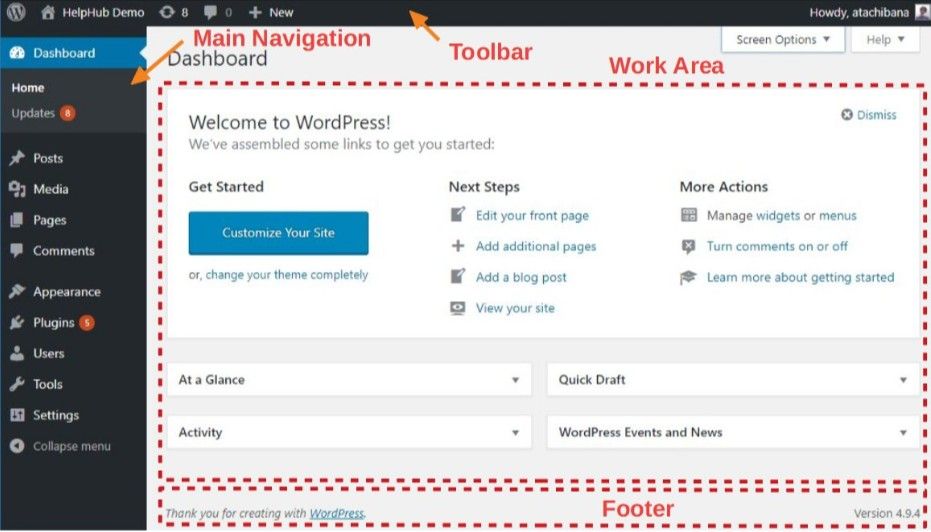
Creating and publishing content is straightforward, and most basic website management tasks can be accomplished with just a few clicks. WordPress’s block editor (Gutenberg) has simplified the content creation process even further, allowing users to build visually appealing pages without coding knowledge.
Adding and customizing themes in WordPress is also relatively simple, with most changes made through user-friendly customization panels. This accessibility is one of the main reasons why WordPress has become so popular among users of all skill levels.
WooCommerce, while built to integrate seamlessly with WordPress, does introduce additional complexity to the website management process.
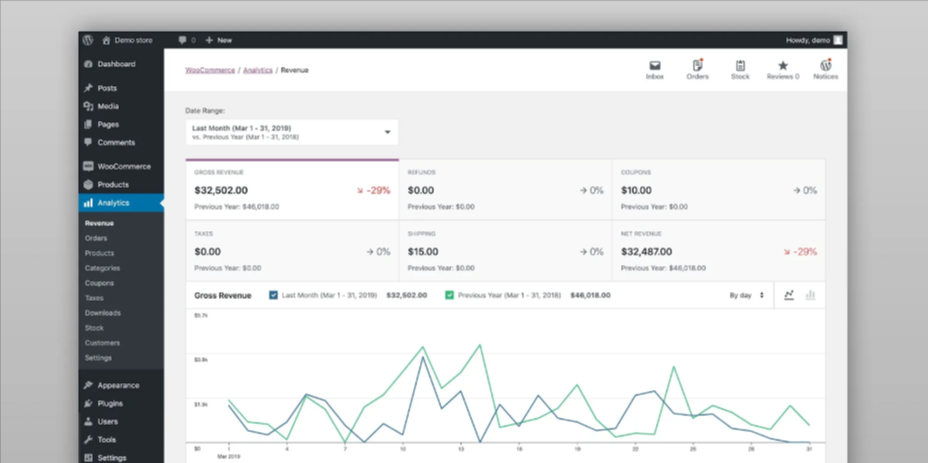
Setting up an online store requires configuring several eCommerce-specific features, such as:
- Product creation and organization
- Inventory management
- Payment gateway setup
- Shipping and tax configurations
- Order processing workflows
These additional layers of functionality create a steeper learning curve compared to basic WordPress. New WooCommerce users often need time to familiarize themselves with concepts like product attributes, variations, tax rules, and shipping classes – elements that aren’t part of standard WordPress.
However, WooCommerce does strive to make store management as accessible as possible. The setup wizard guides new users through the initial configuration, and the product creation interface follows familiar WordPress patterns. For someone already comfortable with WordPress, adapting to WooCommerce is much easier than learning an entirely new platform.
3. Customization
Both WordPress and WooCommerce offer extensive customization options, but they focus on different aspects of website personalization.
WordPress provides remarkable flexibility in terms of overall website design and functionality. With thousands of themes available, you can completely transform the look and feel of your site with just a few clicks. These themes range from minimalist blogs to complex magazine layouts, professional business designs, and creative portfolios.
Beyond aesthetics, WordPress allows for functional customization through its plugin ecosystem. With over 59,000 free plugins in the WordPress repository (and countless premium options), you can add features like contact forms, social media integration, membership systems, and much more without writing code.
For those with development skills, WordPress offers even deeper customization through custom themes, child themes, and direct code modifications. This flexibility makes WordPress suitable for virtually any website project.
WooCommerce builds on WordPress’s customization foundation but adds eCommerce-specific options. When you install WooCommerce, you gain access to store-related customization features such as:
- Product page layouts
- Shop page designs
- Cart and checkout customization
- Email notification templates
- Account page configurations
WooCommerce themes are specifically designed to work with the plugin, featuring optimized product displays, category layouts, and shopping elements. These themes ensure that your store not only looks good but also functions effectively as an e-commerce platform.

Similarly, WooCommerce extensions provide specialized functionality beyond what regular WordPress plugins offer. These include advanced product types (subscriptions, memberships, bookings), enhanced checkout options, shipping integrations, and marketing tools specifically designed for online stores.
The combined customization power of WordPress and WooCommerce allows store owners to create truly unique shopping experiences tailored to their specific brand and customer needs.
4. eCommerce Features
The e-commerce capabilities represent the most significant contrast between WordPress and WooCommerce.

WordPress, in its default state, is not designed as an eCommerce platform. While you can create basic product pages and even link to payment processors, WordPress lacks the integrated systems needed to run a functional online store. It doesn’t include product management tools, shopping carts, checkout processes, or order tracking capabilities out of the box.
This limitation is precisely why WooCommerce was created. When installed, WooCommerce transforms WordPress into a comprehensive eCommerce platform with all the features needed to sell online:
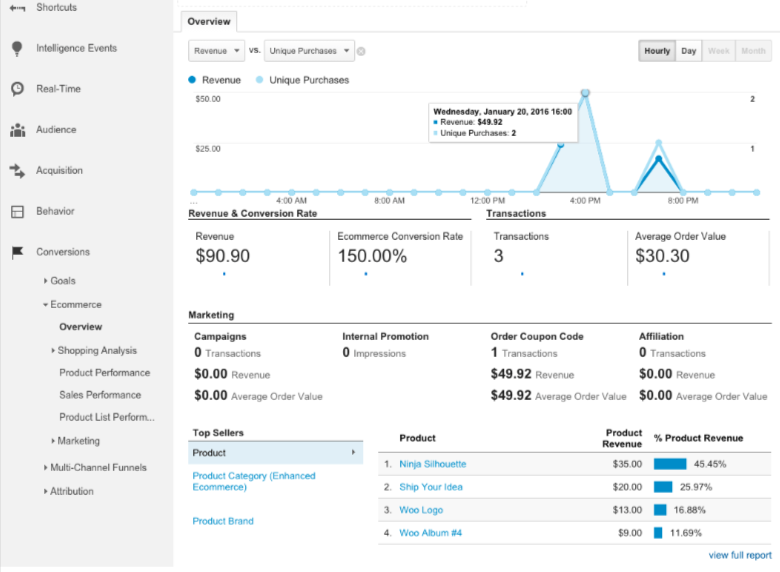
- Product Management: WooCommerce allows you to create different product types (simple, variable, downloadable, virtual), add attributes, manage variations, and organize products into categories and tags.
- Shopping Experience: The plugin adds essential customer-facing features like product search, filtering, wishlists, and a fully functional shopping cart.
- Payment Processing: WooCommerce includes several payment options by default (direct bank transfer, checks, cash on delivery, PayPal) and can be extended to support credit cards, digital wallets, and local payment methods through additional extensions.
- Shipping Options: The plugin supports multiple shipping methods, rates based on weight or location, and integrations with major shipping carriers.
- Tax Management: WooCommerce includes flexible tax settings, allowing you to configure tax rates based on location, product type, and other variables.
- Order Management: The system provides tools for processing orders, tracking status, generating invoices, and managing customer communications.
- Inventory Control: Store owners can track stock levels, set low-stock alerts, and manage backorders through WooCommerce’s inventory system.
- Customer Accounts: The plugin creates customer accounts where users can view order history, manage shipping addresses, and store payment information.
These eCommerce features demonstrate how WooCommerce complements WordPress by adding specialized functionality that the core platform doesn’t provide. Together, they form a complete solution for selling online.
5. SEO
Search engine optimization is crucial for any website’s success, and both WordPress and WooCommerce offer strong SEO capabilities, though with different focuses.
WordPress has earned a reputation for being SEO-friendly right out of the box. Its clean code structure, logical site architecture, and content-focused design all contribute to good search engine rankings. WordPress automatically generates title tags and meta descriptions based on your content, creates SEO-friendly URLs, and includes features like categories and tags for content organization.
To enhance WordPress’s native SEO capabilities, popular plugins like Yoast SEO and Rank Math provide advanced tools for keyword optimization, content analysis, XML sitemap generation, and more. These plugins work seamlessly with the WordPress dashboard, making SEO accessible even to non-technical users.
WooCommerce inherits WordPress’s strong SEO foundation and extends it with eCommerce-specific optimizations. Product pages in WooCommerce are structured to include important SEO elements like:
- Unique product titles and descriptions
- Product categories and tags
- Product image alt tags
- Product schema markup for rich snippets in search results
- Customer reviews (which add fresh, relevant content)
WooCommerce also creates SEO-friendly URLs for products and categories, and its structure ensures that search engines can efficiently crawl and index your product catalog.
However, e-commerce SEO presents unique challenges that require additional attention. Product pages need optimization for commercial keywords, category pages must be structured to avoid duplicate content issues, and the increased site complexity can impact loading speed. WooCommerce store owners often need to implement additional optimizations focused specifically on e-commerce performance, such as enhanced product schema, inventory status markup, and price update frequency settings.
Both WordPress and WooCommerce provide strong foundations for SEO, but the most successful approach combines WordPress’s content optimization tools with WooCommerce’s product-specific SEO features.
6. Security
Security is paramount for any website, but it becomes even more critical when handling customer data and processing payments. Let’s examine how WordPress and WooCommerce approach security.
WordPress, as a widely used platform, has robust security measures in place. The core software undergoes regular security audits, and the WordPress security team quickly addresses any vulnerabilities that emerge. Regular updates are released to patch security issues, and the platform includes features like secure password recommendations, user role management, and login attempt limitations.
However, WordPress’s popularity also makes it a common target for hackers. The platform’s security depends significantly on user practices, such as:
- Keeping the core software, themes, and plugins updated
- Using strong admin passwords
- Installing security plugins
- Choosing reputable hosting providers
- Implementing SSL certificates
WooCommerce adds another layer of security considerations specifically related to eCommerce operations. When you run an online store, you’re responsible for protecting customer information, securing payment transactions, and maintaining compliance with data protection regulations.
WooCommerce addresses these concerns with several security features:
- PCI compliance capabilities for secure payment processing
- Secure checkout pages
- Data encryption for sensitive information
- Configurable user account requirements
- Order data protection
The plugin also receives regular security updates and follows WordPress’s security best practices. Additionally, WooCommerce is designed to work with major payment gateways that handle the most sensitive aspects of transactions, reducing the security burden on store owners.
For both WordPress and WooCommerce, security is partly built in and partly the responsibility of the website owner. The most secure websites combine the platforms’ native security features with additional measures like regular backups, security plugins, malware scanning, and proper server configuration.
7. Community & Support
The availability of help and resources can significantly impact your experience with any platform. Both WordPress and WooCommerce benefit from strong community support, though with some differences.
WordPress boasts one of the largest and most active user communities in the web development world. This extensive ecosystem includes:
- Official support forums with thousands of volunteers
- Countless blogs, tutorials, and online courses
- Regular local meetups and WordCamp conferences
- Active developer communities that contribute to core improvements
- Comprehensive documentation and learning resources
This vast support network means that almost any WordPress question already has an answer somewhere online. Whether you’re troubleshooting an error, learning how to customize a theme, or exploring advanced development techniques, you’ll find resources to help.
WooCommerce benefits from being part of the WordPress ecosystem while also maintaining its specialized support community. As a product maintained by Automattic (the company behind WordPress.com), WooCommerce offers:
- Dedicated documentation covering all aspects of store setup and management
- WooCommerce-specific support forums
- Priority support for users of premium extensions
- Regular updates and feature improvements
- Educational resources focused on e-commerce best practices
The WooCommerce community is smaller than the general WordPress community but more specialized in eCommerce knowledge. This focus can be valuable when dealing with store-specific challenges that general WordPress resources might not address.
Both platforms benefit from a large ecosystem of developers, designers, and consultants who offer professional services. Whether you need custom development, design work, or ongoing maintenance, finding qualified help is relatively easy for both WordPress and WooCommerce projects.
8. Pricing
Understanding the cost structure of WordPress and WooCommerce is essential for planning your website budget effectively.
WordPress, as open-source software, is free to download and use. However, building a functional WordPress website involves several potential costs:
- Domain name: $10-20 per year
- Web hosting: $5-300+ per month, depending on your needs
- Premium themes: $30-100 (one-time purchase) or subscription-based
- Premium plugins: $15-300+ per year or one-time purchases
- Professional customization: Variable based on project scope
The total cost of a WordPress website can vary dramatically based on your specific requirements and whether you choose premium solutions or stick with free options.
WooCommerce follows a similar pricing model. The core plugin is free and provides essential eCommerce functionality. However, running a complete online store typically involves additional expenses:
- WooCommerce-specific hosting: Often $10-100+ per month
- Premium WooCommerce themes: $30-100+
- Essential extensions for payment processing, shipping, etc.: $50-300+ per year each
- Premium extensions for advanced features: $50-300+ per year each
- eCommerce-specific services (like payment gateway fees): Variable based on sales volume
The cost of a WooCommerce store tends to be higher than a basic WordPress website due to these eCommerce-specific requirements. However, compared to hosted eCommerce platforms like Shopify or BigCommerce, WooCommerce often provides better value for growing businesses since you can select only the extensions you need.
Both WordPress and WooCommerce allow you to start with minimal investment and scale up as your needs and budget grow. This flexibility makes them accessible options for businesses of all sizes.
WordPress vs WooCommerce: Which One Offers The Best Hosting Services?
When setting up a website, choosing the right hosting is crucial for performance, security, and user experience. For WordPress and WooCommerce, there are specialized hosting options designed to optimize each platform’s performance.
WordPress hosting is widely available and comes in several forms, from shared hosting to managed WordPress services. These hosting plans are optimized specifically for WordPress websites, offering features like:
- One-click WordPress installation
- Automatic WordPress updates
- WordPress-specific caching
- Pre-configured security settings
- WordPress-trained support teams
Good WordPress hosting ensures your site loads quickly, remains secure, and experiences minimal downtime. For basic WordPress websites without eCommerce functionality, standard WordPress hosting is usually sufficient.
WooCommerce hosting takes WordPress hosting a step further by adding optimizations specifically for online stores. These specialized hosting plans include:
- Enhanced server resources to handle product databases and customer traffic
- WooCommerce-specific caching that preserves shopping cart functionality
- Higher PHP memory limits for processing orders
- PCI compliance for secure payment processing
- Optimized database performance for product searches and filtering
- Staging environments for testing store updates
While WordPress can run on virtually any hosting service that meets its minimum requirements, WooCommerce places higher demands on server resources. As your store grows in products and traffic, these demands increase, making specialized WooCommerce hosting increasingly valuable.
For new store owners, the choice often comes down to current needs versus future growth. If you’re launching a content-focused website that may add eCommerce later, standard WordPress hosting is a good starting point. You can upgrade to WooCommerce-specific hosting when your store’s needs expand.
However, if e-commerce is central to your website from the beginning, investing in WooCommerce-optimized hosting from the start can prevent performance issues and provide a better shopping experience for your customers.
Who Should Choose WordPress?
WordPress is the ideal choice in several scenarios:
- Content creators and bloggers: If your primary goal is publishing articles, blog posts, or other written content, WordPress’s content management capabilities make it perfect for your needs. You can focus on writing and publishing without the complexity of eCommerce features.
- Portfolio websites: Photographers, designers, artists, and other creative professionals can showcase their work beautifully using WordPress themes designed specifically for portfolios.
- Business websites: Companies looking for an informational presence online can build professional business websites with WordPress, including about pages, service descriptions, team profiles, and contact information.
- Non-profit organizations: WordPress provides an excellent platform for non-profits to share their mission, publish updates, and connect with supporters through content-focused websites.
- Educational websites: Schools, universities, and educational content creators can use WordPress to organize courses, publish educational materials, and manage student information.
- Community websites: Forums, membership sites, and community portals can be built using WordPress with appropriate plugins, creating spaces for discussion and connection without eCommerce elements.
In these cases, WordPress alone provides all the necessary tools without the added complexity of eCommerce features. If selling products isn’t central to your online presence, WordPress offers a more streamlined solution focused on content and engagement.
Who Should Choose WooCommerce?
WooCommerce (along with WordPress) is the better choice for:
- Online retailers: If your primary goal is selling physical products online, WooCommerce provides all the necessary tools to manage inventory, process orders, and create product listings.
- Digital product sellers: Creators selling downloadable products like eBooks, music, software, or digital art can use WooCommerce to automate delivery and manage access to digital files.
- Service providers with online booking: Businesses that need to schedule appointments or bookings can use WooCommerce with booking extensions to manage their calendar and process payments.
- Subscription-based businesses: Companies offering recurring products or services can implement subscription models using WooCommerce’s subscription extensions.
- Restaurants with online ordering: Food establishments can use WooCommerce to create menus, accept online orders, and process payments for delivery or pickup.
- Multi-vendor marketplaces: With the right extensions, WooCommerce can power marketplace websites where multiple vendors sell their products through a single platform.
- Content creators who want to monetize: Bloggers or content creators who want to supplement their content with product sales can add WooCommerce to their existing WordPress sites.
For these use cases, the combination of WordPress and WooCommerce provides the perfect balance of content management and eCommerce functionality, allowing businesses to both engage their audience with content and convert them into customers.
Related Reads:
Conclusion: WordPress Powers The Website, And WooCommerce Enables The Online Store
The real strength of using WordPress with WooCommerce lies in scalability. You can start with a simple blog, expand into a small online shop, and eventually grow into a full-featured eCommerce site — all without switching platforms.
WordPress excels as a flexible, user-friendly platform for creating and managing websites of all types. Its strength lies in content organization, design flexibility, and extensibility through plugins. For content-focused websites without selling needs, WordPress alone is often the perfect solution.
WooCommerce enhances WordPress by adding specialized eCommerce capabilities. It transforms a standard WordPress site into a fully-functional online store with products, shopping carts, secure checkout, and order management. For anyone looking to sell online, the WordPress-WooCommerce combination offers an ideal balance of ease of use and powerful features.

